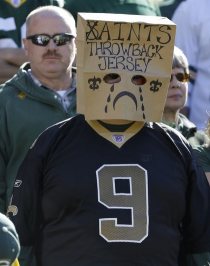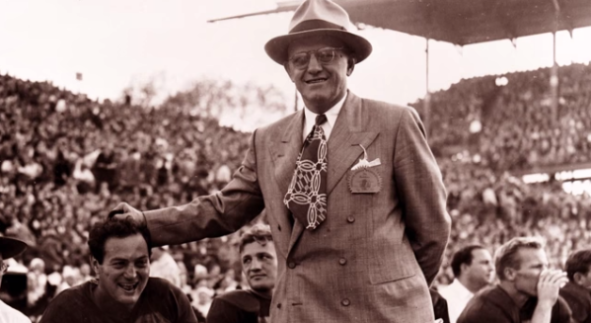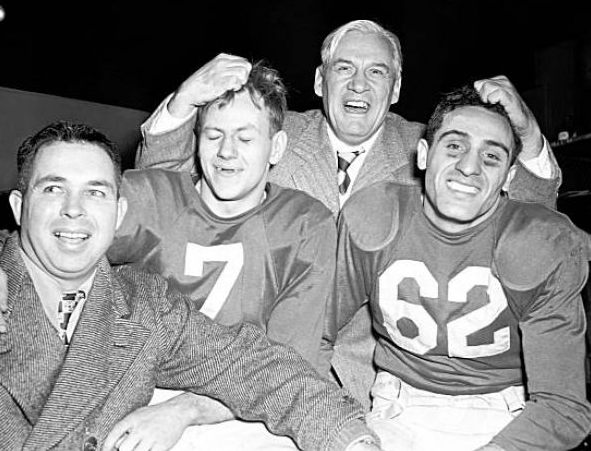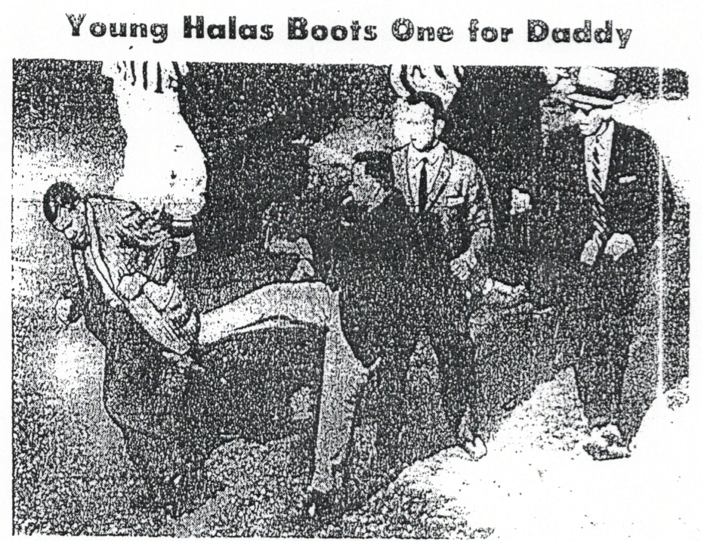Hardly a day goes by that some Media Type doesn’t wonder — on radio, TV or in print — whether Tom Brady will win another Super Bowl. To which I reply: Never mind Brady. Will Bill Belichick win another Super Bowl? Coaches have an expiration date, too.
And the Man in the Grey Cotton Hoodie may have passed his. No coach, after all, has won the Lombardi Trophy later than his 18th season in an NFL head job (the Cowboys’ Tom Landry in 1977). Belichick is in his 20th — five with the Browns, 15 with the Patriots. So if he wins his fourth title, he’ll set a modern record for shelf life.
Yes, Tom Coughlin was 65 when his Giants took the championship in 2011, three years older than Belichick is now. And yes, that made him the oldest Super Bowl-winning coach. But it was “only” his 16th season as a head man. He’d have to capture a third title to top Landry.
And yes, Dick Vermeil was 63 when his Rams ran off with the Lombardi Trophy in 1999, a year older than Belichick is now. But because of a lengthy sabbatical, it was only his 10th season as a head coach. (Age, I’m convinced, is less important than the Number of Years in a Head Job — the pro football equivalent of dog years.)
Here’s a chart I put together of the coaches who’ve won multiple championships in the Super Bowl era. It’s followed by a second chart of those who won multiple championships before the Super Bowl. Weeb Ewbank straddles the two periods, but I included him in the first group because, well, when you’ve coached Joe Namath, you have to be considered a modern coach. How many quarterbacks have been more “mod” than Broadway Joe?
Anyway, these are Belichick’s true peers, more so than one-timers like Tony Dungy (’06 Colts), Bill Cowher (’05 Steelers) and Hank Stram (’69 Chiefs), among others.
SUPER BOWL ERA
[table]
Coach,Team(s),Years,Titles,1st Title,Last Title,Span (Seasons)
Tom Coughlin,Jaguars\, Giants,18,2,12th season,16th season,5 (2007-11)
Bill Belichick,Browns\, Patriots,20,3,7th season,10th season,4 (2001-04)
Mike Shanahan,Broncos\, 2 others,20,2,5th season,6th season,2 (1997-98)
George Seifert,49ers\, Panthers,11,2,1st season,6th season,6 (1989-94)
Jimmy Johnson,Cowboys\, Dolphins, 9,2,4th season,5th season,2 (1992-93)
Joe Gibbs,Redskins,16,3,2nd season,11th season,10 (1982-91)
Bill Parcells,Giants\, 3 others,19,2,4th season,8th season,5 (1986-90)
Bill Walsh,49ers,10,3,3rd season,10th season,8 (1981-88)
Tom Flores,Raiders\, Seahawks,12,2,2nd season,5th season,4 (1980-83)
Chuck Noll,Steelers,23,4,6th season,11th season,6 (1974-79)
Tom Landry,Cowboys,29,2,12th season,18th season,7 (1971-77)
Don Shula,Colts\, Dolphins,33,3,6th season,11th season,6 (1968-73)
Weeb Ewbank,Colts\, Jets,20,3,5th season,15th season,11 (1958-68)
Vince Lombardi,Packers\, Redskins,10,5,3rd season,9th season,7 (1961-67)
[/table]
One of the things that’s interesting about this chart is the span of seasons in which these coaches won titles. Belichick has one of the shorter ones — four (from 2001 through ’04). Only two guys have reached double digits: Ewbank (11, from the ’58 Colts to the ’68 Jets) and Gibbs (10, from the ’82 to the ’91 Redskins).
None of these 14 coaches, though, went a decade between championships. (Ewbank also won in ’59 with the Colts, and Joe also won in ’87 with the Redskins.) That’s what Belichick is trying to do — and if he succeeds, he’ll be the first in the Super Bowl era to pull it off.
It was different in the old days. The Bears’ George Halas, of course, owned the franchise, and other coaches, like Packers founder Curly Lambeau, practically had tenure. So in the next chart you see longer spans — 43 seasons for Halas (though he coached in “only” 35 of them), 20 for Jimmy Conzelman (though he coached in the NFL in only eight of them, leaving to take jobs in college ball and baseball) and 16 for Lambeau. (The thing about Conzelman is, he won titles with the single-wing Providence Steam Roller in 1928 and the T-formation Chicago Cardinals in ’47. That’s staying power. That’s adaptability.)
PRE-SUPER BOWL
[table]
Coach,Team(s),Years,Titles,1st Title,Last Title,Span (Seasons)
George Halas,Bears (Staleys),40,6,2nd season,36th season,43 (1921-63)
Paul Brown (+ AAC),Browns\, Bengals,25,7,1st season,10th season,10 (1946-55)
Paul Brown (NFL only),Browns\, Bengals,21,3,1st season,6th season,6 (1950-55)
Buddy Parker,Lions\, 2 others,15,2,3rd season,4th season,2 (1952-53)
Greasy Neale,Eagles,10,2,8th season,9th season,2 (1948-49)
Jimmy Conzelman,Cards\, 4 others,15,2,7th season,14th season,20 (1928-47)
Curly Lambeau,Packers\, 2 others,33,6,9th season,24th season,16 (1929-44)
Ray Flaherty,Redskins,7,2,2nd season,7th season,6 (1937-42)
Steve Owen,Giants,23,2,4th season,8th season,5 (1934-38)
Guy Chamberlin,Canton\, 2 others,6,4,1st season,5th season,5 (1922-26)
[/table]
But then, this is Bill Belichick we’re talking about, the winningest coach of his time. He’s returned twice to the Super Bowl in recent years and come up empty but, being Bill, may yet get another shot. The odds are against him, though, and sometimes those can be as hard to overcome as a miracle David Tyree catch in the final seconds.
Source: pro-football-reference.com




